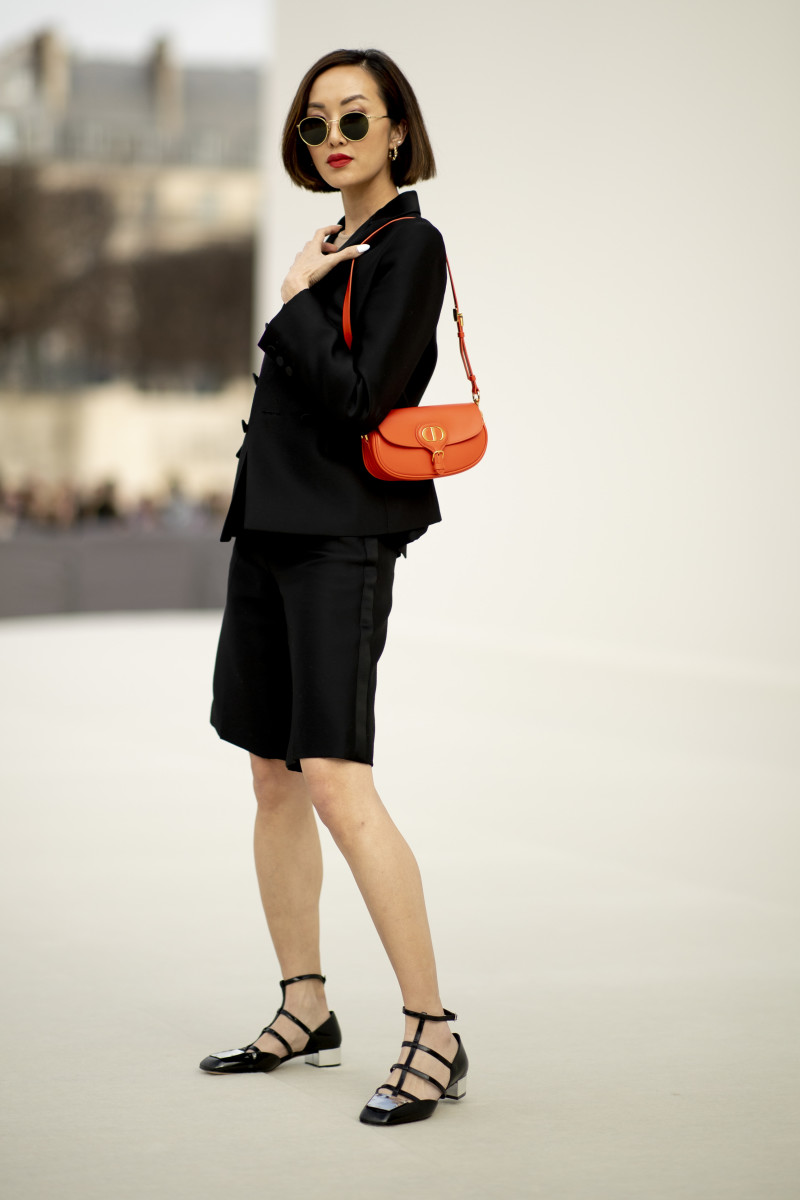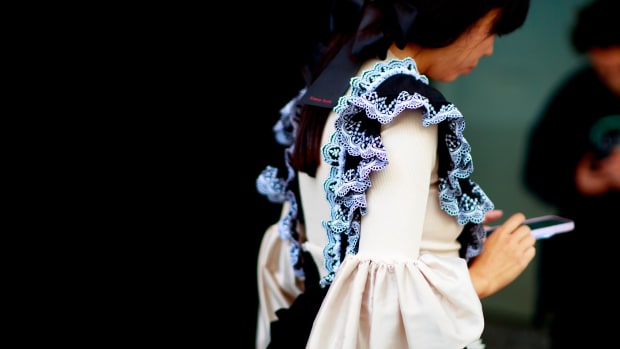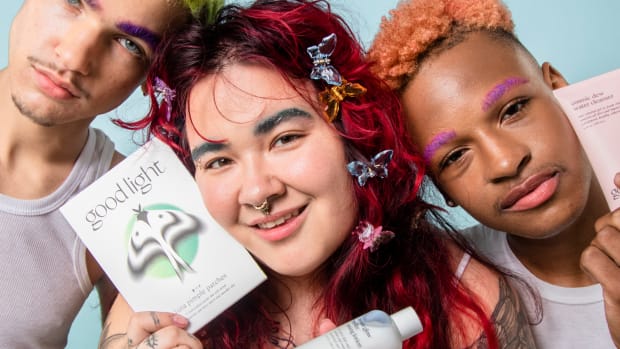In the years since it entered the cultural lexicon, the phrase "fashion influencer" has come to evoke a particular image: a carefully coiffed woman — usually young, usually thin — with
a closet full of gifted clothing and a picture-perfect Instagram feed. A mirror selfie here, a designer unboxing there, and tens of thousands of adoring followers double-tapping each post and dropping heart emojis in the comments.
This being fashion, though, no trend can last forever, and what seemed fresh and disruptive a decade ago has today entered the realm of cliché. This genre of influencer still wields power: The most prominent now helmmulti-million-dollarbusinesses and have crossed the threshold into celebrity status. But their path to success — Wordpress blog to Instagram feed to fashion week front row — is the product of a different era. Today, "influencer" applies to all kinds of online creators beyond aspirational pretty people, from TikTokers and YouTube runway historians to Twitter personalities and newsletter writers, from stylists and editors to a new guard of fashion commentators as fluent in memes as they are Margiela.
As the field expands, it's opening more opportunities for creators who don't fit the traditional mold. At the same time, the influencer world is becoming more oversaturated by the day, and it's still unclear who among the new guard will be able to parlay their current audience into a lasting career. Can fashion creators keep people interested without making their face their brand? Can they continue expressing their unfiltered opinions once sponsored content deals are on the table? Will they eventually make the leap from social media to the billboards and boardrooms of top fashion houses?
At Bottega Veneta's February show in Milan, the veteran blogger Bryan Yambao remarked on a shift among the invitees from "personal-style influencers" to what he called "voices"; instead of the usual street-style subjects, he tweeted, there were the Instagrammers behind @newbottega, @ideservecouture and @stylenotcom. Popular though these accounts are — @stylenotcom's straightforward dispatches have attracted more than 20,000 industry watchers in a matter of months, @ideservecouture pokes fun at the fashion world to an audience of 85,000, the fan-run @newbottega documents the house's aesthetic for more than a million followers — their creators mostly stay behind-the-scenes, posting commentary or collection images rather than their daily outfits. That they scored invites to one of fashion month's hottest tickets shows the growing interest in a new kind of fashion influencer, one who inspires conversation as much as conversion.
"I think brands are now, more than ever, really eager to have people discussing and dissecting and excited about their shows," says Rachel Tashjian, fashion news director at Harper's Bazaar and the creator of the popular weekly newsletter Opulent Tips. "It may not be the number of likes that sending a handbag to an influencer might get them, but the engagement is so intense."
She points to the steady stream of questions and comments José Criales-Unzueta (who was even name-dropped in the new "Gossip Girl") reposts on his Instagram Stories, and the DMs she receives after every new collection review — some offering praise, others wondering how she missed a reference to, say, look 36 in Hedi Slimane's Spring 2016 collection.
The process is participatory, though not in quite the same parasocial sense as most influencer/follower interactions, since the focus isn't on the critic personally. Followers want to bring their knowledge and opinions to the discussion as much as they want to see what a creator has to say. They're also eager to learn, argues Kim Daniels, a.k.a. @thekimbino, a Perth-based digital archivist with more than 160,000 followers across Instagram and Twitter.
When she posts about some lesser-known moment in fashion history, like photographer Charles Traub's images of New Yorkers in the '70s or Jamiroquai wearing Tom Ford for Gucci, Daniels is feeding her followers' curiosity and inviting them to do more research. With a standard influencer outfit post, she says, "I look at it and think, 'What does that do for me?' I can respect it. I can gag over it. But people want something more, something they can take away." Influence, in her mind, isn't just about inspiring people to wear Fashion Nova or buy a new lipstick: "It's not just a product. It's a lot broader now."
Daniels is now exploring how to leverage her point of view and high-profile following into a full-time job. Conceptualizing photo shoots for magazines is one short-term goal, and this week she announced she’s teaming up with the retail aggregator Lyst on a series of shoppable, educational "archive dives." The path to monetization for archive and criticism accounts isn't as clear-cut as it is for personal style influencers, for whom brand recommendations and product placements are essentially part of the job description.
Some platforms make it easier to get paid than others: YouTubers can make money from ads, memberships and merchandise; Substack writers can set subscription fees; TikTok has a Creator Fund and a tipping feature. But these offer paltry earnings compared with potential brand deals. Platforms are also increasingly working with top talent directly: Instagram's parent company Meta invited 12 creators to make shortform video content at the Oscars this year in a bid to bolster Reels' relevancy, while TikTok sponsored London Fashion Week last September, ensuring talent got front-row seats at the shows. Twitter, while arguably home to the most engaging discourse around the industry thanks to the High Fashion Twitter community, has so far done little to boost creators or give them the kind of avenues for monetization that might encourage them to stick around.
Recommended Articles
Tashjian suggests that mainstream publications would be smart to hire these creators to write or create content for them — and in fact, many are. The Kimbino has a column for The Face. Criales-Unzueta is a regular contributor to i-D and recently wrote a feature for Fashionista. Louis Pisano has done street-style commentary for Vogue France and profiled Beyoncé's stylist for Harper's Bazaar; though, lately the Paris-based creator is more often the one being written about (see: Interview Magazine's recent piece christening them "Instagram's messiest fashion influencer").
Personal branding efforts like Pisano's — moving from "voice" to "face" — may ultimately be inevitable, because what traditional fashion media provides in terms of prestige and industry connections, it lacks in budget. And while influencers can certainly get by on sponsored content alone, the most successful ones today don't just push products: They build businesses.
Hilary Williams, a partner at the influencer management company Digital Brand Architects, reps a slate of creators who have developed product lines for national retailers, written best-selling books and created popular online courses. In signing talent, she explains, she isn't just looking at aesthetics or metrics, but for unique voices that inspire their followers to take action, whether that's trying out a new trend, making a recipe or joining a conversation.
"Whatever platform you're on, whatever vertical you fall into, it's about: Who's your community? What's this message that you're putting out there into the world? And how's it actually inspiring others to do really cool things or do good?," she says.

In addition to being a content creator with brand sponsorships, Chriselle Lim runs multiple businesses, including a fragrance line and a childcare startup.
Photo: Imaxtree
While millions of people might follow mega-influencers like Chiara Ferragni or Chriselle Lim to gawk at designer handbags and lavish hotel rooms, the vast majority of them aren't shopping at the same stores or booking the same vacations. They don't need to: Ferragni and Lim may have started as personal style bloggers, but much of their business is now devoted to operating and advising brands. (Lim co-owns Phlur fragrances and the childcare startup Bümo, while Ferragni runs her namesake fashion label and sits on the board of directors at Tod's.) The average fashion fan today is more likely to buy the Abercrombie jeans recommended by a TikToker who wears their size and shops in their price range. This is changing which influencers can monetize their following — and how they can do it. The biggest accounts aren’t necessarily the best ones at selling products; followers today know when they're being shilled to, and they're more likely to be swayed by the recommendation of a friend or trusted source. With Instagram and other platforms expanding their tools for creators to sell directly to audiences, relatability will likely become even more of a golden ticket.
This doesn't mean that influencers need to be an everygirl to find a following, though. With the glut of content out there, originality and substance are more valuable than ever. Look at the rising stars of TikTok, many of whom harken back to the early days of blogging, when individuality — and, to be frank, a bit of weirdness — was welcome. Creator Wisdom Kaye garners millions of views on videos like "outfits I'd wear as a time traveler" and "looks inspired by Marvel heroes," while Clara Perlmutter (who you might know as @TinyJewishGirl) takes a madcap approach to styling pieces like beaded bonnets and an asymmetrical top printed with an image of wrestler John Cena. For those who were on the fashion internet back in the late aughts, these outré ensembles may be a welcome reminder of bloggers like Susie Lau and Tavi Gevinson, who paired sharp style writing with more-is-more-is-more philosophies of layering and accessorizing. Those who don't fit the cookie-cutter mold again have a chance to thrive: Over a million people follow the 50-something Dallas-based designer Carla Rockmore on the platform, in part to peek inside her never-ending closet, but also for her genuine enthusiasm and matter-of-fact styling advice.
There's also growing interest in educational content, beyond simply runway history. Sustainable fashion influencers such as Aja Barber have built communities by sharing information about the environmental impact of fashion, interrogating industry ethics and showing off wardrobes filled with vintage pieces and well-worn slow-fashion staples. Another, Leah Thomas, has seen her following balloon since broadening her focus from sustainable clothing to social and environmental justice two years ago, founding The Intersectional Environmentalist, writing a how-to book by the same name and partnering with brands like Teva and Free People along the way. And Chrissy Rutherford, a former Harper's Bazaar editor, bridges the gaps between fashion influencer, anti-racism consultant and mental health advocate with her newsletter FWD JOY, consulting agency 2BG (2 Black Girls, founded with fellow industry alum Danielle Prescod) and deals with J. Crew and Aritzia.
Above all, creators today need a unique voice — not just a closet full of designer clothes.
"Being a person of influence goes much further than being able to convert or drive engagement," says Williams. "Those are important, but it doesn't necessarily need to be on a lipstick. It could be on a movement."
Never miss the latest fashion industry news. Sign up for the Fashionista daily newsletter.



